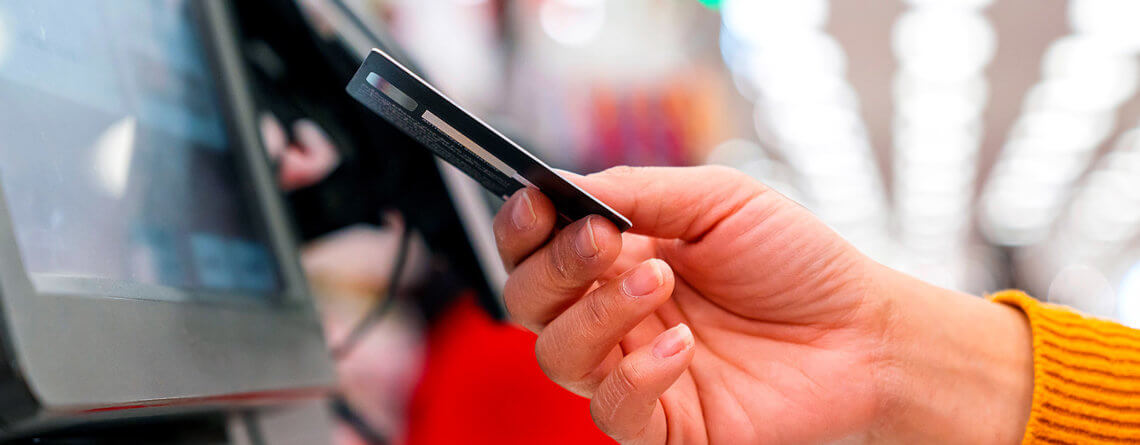Perfecting Unattended Retail Models With Payment Technology
Varone2022-07-07T19:02:22-04:00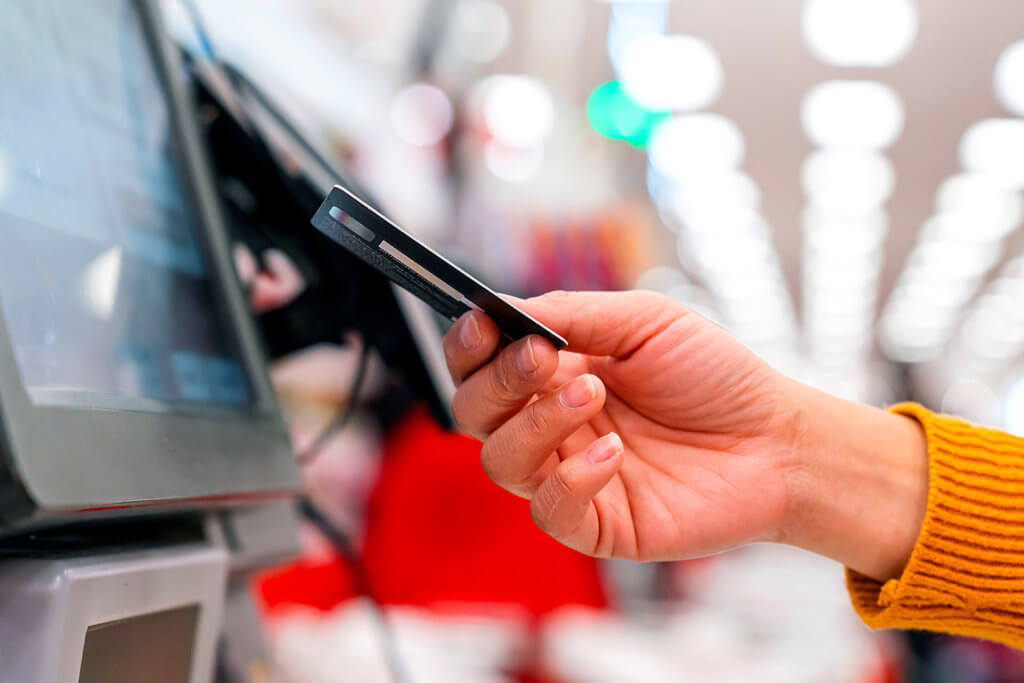
Driven by consumer demand for convenience and increased health concerns due to the pandemic, unattended retail options such as kiosks and vending machines are growing in popularity among shoppers. Broadly defined, the unattended retail industry refers to automated systems deployed to help in-store buyers shop, order, and transact without any intervention from employees or staff.
Recent PYMNTS data revealed that 80% of in-store shoppers would like to use non-traditional checkout options like self-service. As a whole, the U.S. self-service systems market size is anticipated to reach $2.97 billion by 2028, expanding at a compound annual growth rate (CAGR) of 11.3% from 2021 to 2028. With demand on the rise and an optimistic industry forecast, Independent Software Vendors (ISVs) and Software-as-a-Service (SaaS) providers have the opportunity to create customized unattended retail solutions that enable their portfolio of merchants to expand into unattended retail.
When preparing to enter the unattended retail market, ISVs and SaaS providers must have a firm understanding of the technology, its history, and the requirements of a successful unattended retail solution. This white paper will explore these topics and the drivers of unattended retail, the benefits these solutions provide, and the cutting-edge payment technology that underlies successful unattended retail solutions.

Read the full white paper anytime and anywhere.
Unattended Retail: Beginnings to the Present
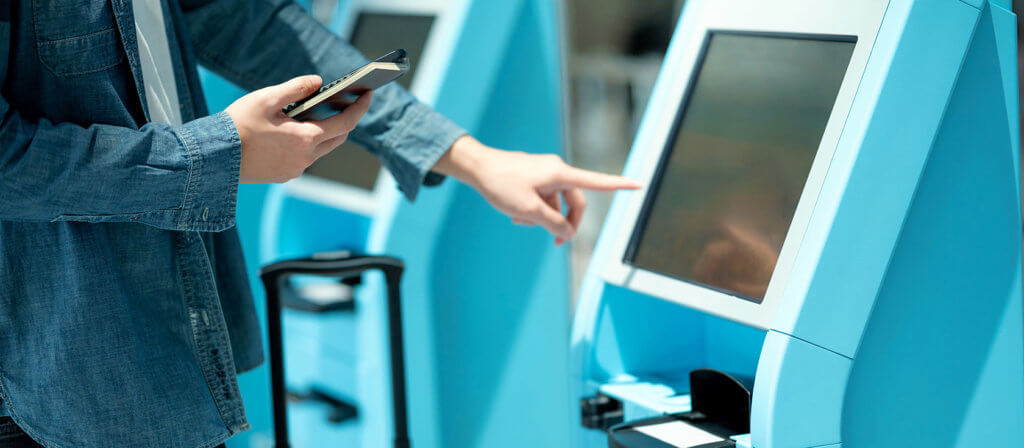
The beginnings of unattended retail are rooted in simple self-service setups — like the common vending machine. The first modern vending machines were developed in England in the early 1880s and dispensed postcards. Also known as “automatic retailers,” these machines were usually found near post offices and railway stations, later adding notepaper and envelopes to their product lineup.
This trend continued throughout the years as the industry began to deliver more variety, including gum, cigarettes, coin-based laundromats, and the well-known snack and soda vending machines. Success in this industry was and still is dependent on providing the right products in the right places at the right times — for example, snacks in the hospital waiting room at 2 A.M., stamps outside of the post office after closing, or bottled water to quench the thirst of early morning runners at the park.
Today’s offerings have evolved to provide an even wider variety of products across a more diverse range of retail environments. Now consumers can purchase everything from electronics to attraction tickets, neckties, and even cars — without the pressure of a salesperson. These innovations have been made possible, in large part, by the advancement of technology, including the invention of near-field communication (NFC), widespread internet connectivity, and QR codes.
Technical Advancements Pave the Way for Unattended Retail
Many technologies have made modern unattended retail solutions possible, but a few notable advancements stand out. Take a look at how these key innovations have laid the groundwork:
- NFC Tap-to-Pay
Near-field communication (NFC) utilizes radio-frequency identification (RFID) technology to allow payment terminals and other hardware to communicate with the chip embedded in a contactless credit card or with a mobile device. First patented in 1983, NFC wasn’t applied to payments until contactless cards were launched in the mid-2000s. These contactless cards enabled vending machines to accept credit cards using a simple tap-to-pay option. Contactless cards not only offered consumers a more convenient way to pay but also provided vending machine operators with a more practical solution versus magnetic stripe or chip and PIN card readers that were susceptible to vandalism, hacking, and part failures due to non-weatherproof components. In recent years, the use of mobile devices to make digital wallet payments has grown in popularity alongside contactless cards.
- Widespread Internet Connectivity
Widespread internet connectivity also helped advance the unattended retail industry, paving the way for the Internet of things (IoT). IoT technologies give present-day self-service systems the ability to communicate wirelessly with payment networks, inventory management applications, and accounting software. Equipped with electronic touch screens and user-friendly interfaces, a kiosk can provide detailed product information and expanded ordering capabilities. At the same time, the ability to accept digital payments allows for higher-end, more expensive purchases that would not be possible with the cash- or coin-only machines of the past.
- QR Codes
QR codes make use of a unique matrix barcode that, upon scanning, directs the user to perform a specific action, such as visiting a website or downloading an app. Internet connectivity and the proliferation of mobile devices have facilitated higher adoption rates across an expanded array of use cases, including unattended retail payments. It’s now possible to scan a QR code on a vending machine or kiosk and direct the consumer to pay using an online form or mobile app — all completely contactless.
Drivers of Unattended Retail Growth
Advancement in technology has been one of the most significant drivers that has made it possible for modern kiosks and self-service terminals to spread across locations and offer non-traditional products. However, other factors have also contributed to the unattended retail industry’s recent growth — including changing consumer preferences, health-related concerns amidst the pandemic, and labor shortages:
- Changing Consumer Preferences
People hate waiting in lines — 86% of consumers have actually left a store due to long lines. Multiple self-service
options or kiosks can help shorten the wait time by offering more capacity. Additionally, digital capabilities like touchscreen menus and contactless payment options reduce friction by simplifying the purchasing process and allowing
unattended retail solutions to deliver faster, more convenient experiences. For example, a customer can now choose
one of many payment options just by tapping their card or mobile device. - Health-Related Concerns
During the height of the pandemic, many shoppers preferred contactless checkout due to health concerns. Unattended
retail options allowed customers to avoid human interaction as well as high-touch surfaces like keypads on payment
terminals. Yet even though the pandemic no longer poses the same threat, people are now accustomed to contactless
checkout and continue to use these options. In fact, nearly 50% of consumers say they will not shop at a store that
doesn’t offer a contactless way to pay. - Labor Shortages
Businesses are currently facing unprecedented challenges trying to find enough workers to fill open jobs. The U.S. Chamber of Commerce cites that if every unemployed person in the country found a job, there would still be 5.3 million openings. With labor participation rates on the decline, many businesses are implementing unattended retail solutions for their ability to facilitate key business operations without the need for staff.
The Benefits of Unattended Retail for Merchants
Unattended retail solutions increase checkout speed and offer convenience for consumers. Yet merchants, too, stand to benefit greatly from unattended retail. Here’s a closer look at some of the many benefits for merchants:
- Faster, Frictionless Checkout
The number one reason consumers opt for self-checkout is that they are looking for a quicker, more frictionless purchasing experience. Fast and frictionless checkouts benefit merchants as well by improving operating efficiency, allowing more shoppers to move through the purchasing process— thereby increasing sales.
- Reduced Costs
Many merchants are drawn to self-service solutions because they reduce overhead costs. A strategically placed kiosk eliminates the need for employees and costs significantly less than a traditional storefront.
- Expanded Operational Hours
The capability to conduct business without staff allows operations to run late into the night or on holidays — presenting merchants with the opportunity to automate purchases and make sales outside of regular business hours.
- Greater Efficiency
Unattended retail allows businesses to leverage their employees for more complex tasks versus utilizing staff for tasks that can be automated and completed at a lower cost.
- Data and Intelligence Gathering
Unattended retail solutions aren’t limited to purchasing. For example, “smart carts” are devices that allow grocers to retrofit their existing shopping carts with technology powered by artificial intelligence (AI). These devices automate checkout and collect data about consumers’ behavior as they move through the store. With traffic data in hand, retailers can more intelligently plan store layouts.
- Promotional and Informational Value
Kiosks equipped with graphical displays can be used to promote additional products or make complementary product recommendations. Alternatively, unattended retail solutions can provide real-time inventory listings or tell shoppers in which aisle they can find a particular product.
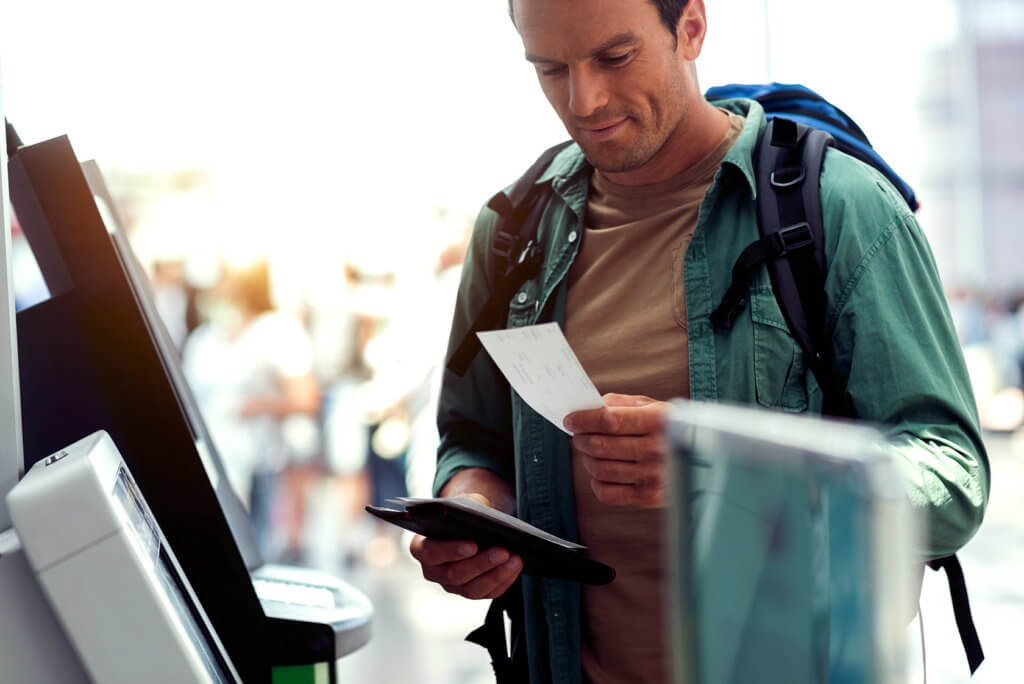
Unattended Retail Use Cases
Research from PYMNTS.com suggests that the unattended market could grow by as much as 70% if consumers who sought to make self-service purchases had access to them — representing a considerable opportunity for ISVs and merchants to grow their customer bases. Furthermore, 38% of consumers who made their most recent purchases from unattended channels would like to use them to shop for nontraditional vending products, opening the door for expanded use cases across industries. Consider the following examples:
- Healthcare
Doctor’s offices and hospitals can use kiosks to collect patient information, accept payments, provide prescriptions, and automate appointment scheduling.
- Amusement and Entertainment
Attractions such as amusement parks, sporting arenas, museums, and concert venues can utilize unattended retail terminals to reduce wait times by offering self-pay ticketing and automated ordering for concessions.
- Travel and Hospitality
Travelers can choose to book reservations online and use a kiosk to pick up hotel room or car keys —eliminating the need to staff front desks or car rental facilities around the clock. Self-service terminals are also beneficial for public transit ticketing.
- Vending
Vending machines placed at essential points like airports, hotels, college campuses, and office parks can offer traditional drinks and snacks and non-traditional products like women’s flats, over-the-counter medications, or souvenirs.
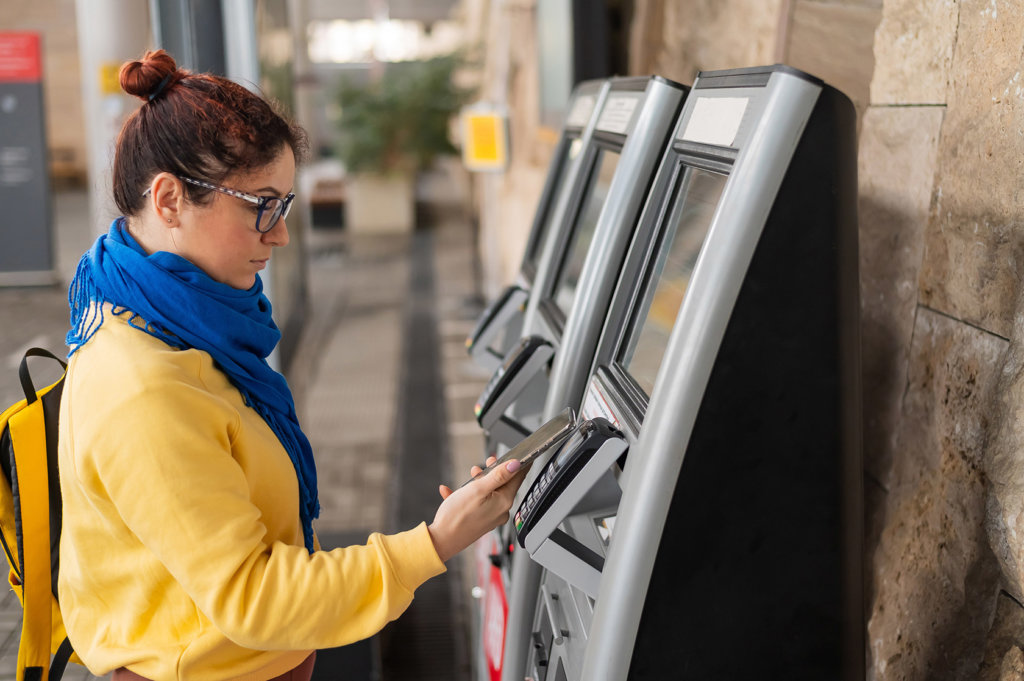
Unattended Retail Relies on Payment Technology
The Role of Payments in Unattended Retail
Kiosks and self-service terminals make up the face of the unattended retail industry. However, payment processing technology is foundational to offering a cutting-edge, unattended checkout experience. Payment gateways can be integrated with point-of-sale systems and terminal hardware to create customized solutions. By integrating with a payment gateway that offers comprehensive features such as omnichannel capabilities, streamlined merchant management, advanced security, and other value-added solutions, ISVs have maximum flexibility to create a checkout flow that meets their clients’ needs.
The Importance of Omnichannel Payments
Data from Worldpay cites that omnichannel shoppers spend up to 300% more than those shopping on a single channel.
Omnichannel is a multi-channel sales approach that focuses on providing the customer with a seamless shopping experience, no matter where or how they choose to buy. Whether they’re shopping at a kiosk, via a mobile device, or online, consumers think of shopping as a single, uniform experience. In order to grow sales, ISVs, SaaS providers, and merchants must think the same way. For example, as a growing number of customers opt for online ordering or curbside pickup, payment technology capable of syncing mobile ordering apps and e-commerce sites with in-store checkouts creates a seamless omnichannel experience that is more profitable for merchants and ISVs. With unattended retail solutions, it’s that much easier to perfect the omnichannel experience.
Cardknox’s Unattended Retail Solutions
Cardknox offers end-to-end payment processing solutions for unattended retail that can be quickly integrated into existing software and hardware offerings with just a few lines of code. Here are some of the flexible features Cardknox offers:
Competitive Rates
We rely on our decades of pricing experience, manual account monitoring, and proprietary Interchange Qualification Monitoring (IQM) technology to ensure that every transaction qualifies for the lowest rates.
Omnichannel Payments
Sync your e-commerce site and mobile applications with in-store and unattended retail systems for an enhanced customer experience and seamless business management.
Support for Leading Hardware
The Cardknox gateway supports the most advanced unattended hardware, including ID TECH’s VP6300 and 6800 devices — perfect for installation with self-service kiosks and vending machines.
Flexible POS Integrations
Cardknox offers gateway integrations with browser-based and cloud-based point-of-sale software, allowing you to customize a solution that syncs operational tasks with transactions.
Advanced Reporting and Transaction Management
Gain critical business insight at a glance with comprehensive payment management using the Cardknox Merchant Portal. Generate standard or custom reporting, filter for specific transactions, adjust past transactions, and more.
Next-Generation Security and PCI DSS Compliance
Simplify the path to Payment Card Industry Data Security Standard (PCI DSS) compliance. With advanced encryption and tokenization technology, sensitive data is kept off merchant servers and out of PCI DSS scope.
In-House Technical Support
Cardknox clients enjoy white-glove customer service from its U.S.-based support center.
Added Benefits for ISVs
Cardknox’s Partner Program is among the most competitive in the industry. Enjoy lucrative revenue sharing, developer-friendly technology, and outstanding support:
- Generous Revenue Sharing
Reap the rewards of our unparalleled revenue model that scales with your business. Partnering with Cardknox gives you an added revenue stream, increasing your bottom line and your business valuation.
- Hassle-Free Integrations
Utilize our powerful API and SDK to build out custom integrations with just a few lines of code. For existing gateway integrations, take advantage of our gateway emulators. Plus, utilize plugins to fast track your integrations with popular ERP, accounting, and POS software like NetSuite, RMH, and QuickBooks.
- Integration Support
Gain access to a dedicated account executive who will be available from day one to guide and assist you. Plus, enjoy easy access to our Developer Support Team via a dedicated Slack channel, email, or phone.
- Cutting-Edge Technology
Cardknox offers nearly three decades of industry experience and expertise. With a dedicated team that researches and develops state-of-the-art solutions, you can always expect the most advanced technology.
Capitalize on Growing Demand
Shoppers demand contactless, frictionless checkout options across industries, products, and retail environments. Unattended retail offers consumers and merchants the benefits they want while providing enormous growth potential for ISVs. With future projections trending upward, now’s the time to get started with unattended retail.
The Cardknox approach brings ISVs and SaaS providers many advantages: competitive residuals, ease of integration, omnichannel solutions for every sales channel, and much more. Contact us today to begin your journey toward the future of payments.

Read the full white paper anytime and anywhere.
